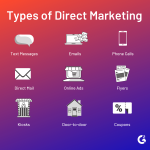5 Essential Tips for Successful Direct Mail Marketing Campaigns
In today’s digital age, it’s easy to forget about the power of traditional marketing methods like direct mail campaigns. However, these campaigns can still be incredibly effective, especially when targeting specific audiences and increasing brand recognition. In fact, according to the Data & Marketing Association, direct mail campaigns had a record-high response rate of 9% in 2018.
If you’re considering launching a direct mail campaign, there are a few key things you should keep in mind. First and foremost, it’s important to pay attention to the details. Make sure your mailing list is accurate and up-to-date, and that you’re targeting the right people with your message. Additionally, you’ll want to carefully plan your campaign, thinking through everything from your messaging to your design and beyond.
To help you create a truly powerful direct mail campaign, we’ve put together five valuable tips. These tips will help you get the most out of your campaign, ensuring that you’re able to connect with your audience and achieve your marketing goals. So without further ado, let’s dive into the world of direct mail marketing!

Target Audience
In the fiercely competitive landscape of contemporary business, pinpointing your target audience and gaining a deep understanding of their characteristics, preferences, and behaviors is the cornerstone of any triumphant marketing strategy. This process, often referred to as audience segmentation, involves dividing a broad target market into subsets of consumers who have common needs, interests, and priorities, and then designing and implementing strategies to target them.
The importance of identifying your target audience cannot be overstated. According to a study by the Harvard Business Review, businesses that have a clear understanding of their target audience are 2.2 times more likely to exceed their revenue goals (source).
To optimize your marketing efforts and maximize your return on investment (ROI), it is essential to delve into the world of your audience. This involves understanding their quirks, their likes, their needs, and their habits. You need to understand what motivates them, what deters them, and what engages them. This might seem like a monumental task, but it is crucial in creating a personalized, customer-centric approach that delivers results.
Understanding your audience’s quirks and likes involves market research. This can be done through surveys, focus groups, and social media analysis. For example, a study by Sprout Social found that 63% of consumers want brands to treat them like a friend (source). This kind of insight can help shape your marketing strategy and messaging.
Understanding your audience’s needs is another crucial aspect. This involves understanding their pain points and how your product or service can solve them. This can be achieved through customer interviews and feedback. A study by Microsoft found that 96% of consumers say customer service is important in their choice of loyalty to a brand (source).
Understanding your audience’s habits involves understanding their behavior. This includes their online behavior, such as the websites they visit, the social media platforms they use, and their online shopping habits. Google Analytics is a powerful tool for understanding online behavior (source).
Understanding what motivates your audience involves understanding their values and aspirations. This can be achieved through psychographic segmentation, which involves dividing your market based on personality traits, values, attitudes, interests, and lifestyles. A study by Deloitte found that 56% of consumers consider their purchase decisions to be influenced by their values (source).
Understanding what deters your audience involves understanding their fears and objections. This can be achieved through customer feedback and social listening. A study by PwC found that 73% of all people point to customer experience as an important factor in their purchasing decisions (source).
In conclusion, understanding your target audience is a complex but rewarding process. It involves understanding their quirks, likes, needs, habits, motivations, and deterrents. By doing so, you can create a personalized, customer-centric marketing strategy that delivers results.
The practice of audience research has become increasingly important in recent years, as companies seek to adopt a more customer-centric approach to their business. With the rise of digital marketing channels and the abundance of data available, it has become easier than ever to gather insights into your target audience’s behaviors, preferences, and buying habits. This information can be used to create more targeted and effective marketing campaigns that deliver real results.
One of the key benefits of audience research is that it allows you to tailor your messaging and marketing efforts to specific segments of your audience. By identifying different groups within your overall target audience, you can create messaging that speaks directly to their needs, interests, and pain points. This can help to build stronger relationships with your customers, and ultimately drive increased loyalty and sales.
Of course, conducting audience research can seem overwhelming, particularly if you are just starting out. However, there are a range of tools and resources available that can help you to gather and analyze data about your target audience. From social media listening tools to surveys and focus groups, there are a variety of methods you can use to gain insights into what your customers really want and need.
In summary, investing time in audience research is absolutely essential for any business that wants to succeed in today’s competitive market. By understanding your target audience on a deeper level, you can create more effective marketing campaigns, build stronger relationships with your customers, and ultimately drive business growth and success. So don’t hesitate – start investing in audience research today, and take your business to the next level.
Creating Audience Personas: Direct Mail

The power of personas lies in their ability to personify a group of potential customers, giving them a face and a story. This allows you to empathize with them and understand their journey better. With these personas, you can craft unique, targeted messages that resonate with each group’s specific characteristics and needs. For instance, a tech startup might have different strategies for engaging with tech-savvy millennials compared to older, less tech-inclined users.
To kick off this process, you must create audience personas. Think of a persona as a fictional character that encapsulates all the significant traits and characteristics of a segment of your potential customers. Creating these personas involves an in-depth analysis beyond standard demographics like age, gender, or geographical location. It consists in delving into their lifestyles, the things they value, their behavioral tendencies, their motivations, their challenges, and their aspirations.
The second phase of audience analysis involves audience segmentation. It divides your audience into smaller, more manageable groups based on shared characteristics. These characteristics could be anything from demographic information, psychographic traits, behavioral patterns, or other defining factors. The goal is to identify distinct groups within your audience that may respond differently to your marketing efforts.
Taloring your direct mail Message
By tailoring your messaging to the unique needs and characteristics of these different segments, you can significantly improve the effectiveness of your marketing efforts. For example, a part of your audience that values sustainability would likely respond more positively to a marketing campaign emphasizing your company’s commitment to environmentally friendly practices. In contrast, a segment that values convenience might be more attracted by a campaign highlighting your product’s ease of use.
Once you’ve identified your audience personas and segments, it’s time to apply this knowledge. It means customizing your marketing strategies, promotional messages, product designs, and business processes to appeal to these different groups. This requires constant monitoring, testing, and adjustment, but the effort is worth it. The insights you gain from this process will not only help in effectively reaching out to your audience but will also drive innovation, improve customer satisfaction, and, ultimately, contribute to the success of your business.
By investing time and resources into a detailed audience analysis, you are making a prudent investment towards reaching your marketing goals. In the end, the more you understand your audience, the better you can serve them, and the more successful your business will become.

Creating a compelling and attractive offer is a crucial aspect of any successful marketing strategy. An attractive offer can motivate potential customers to take action and engage with your brand. However, it is essential to ensure that the offer you provide is relevant and beneficial to your target audience. Offering a generic incentive may not be enough to capture their attention and persuade them to take action. To create a personalized and appealing offer, you need to understand your target audience’s needs and preferences. Conducting market research can help you determine what incentives will appeal to your potential customers. You can offer a discount code, a free consultation, a trial period, or any other valuable incentive that will make them feel that interacting with your brand is worth their time and effort. When creating an offer, it is important to be clear about its benefits.
Highlighting the value of your offer can help persuade potential customers to take action. Providing a clear and concise description of the offer and its benefits can help you stand out from the competition and establish yourself as a trustworthy brand. In addition to being relevant and beneficial, your offer should also be personalized. Personalization can help you connect with your target audience on a deeper level and build stronger relationships with them. By tailoring your offer to their specific needs and preferences, you can show that you understand and care about their concerns and interests. Ultimately, creating a compelling and attractive offer can help you convert leads into loyal customers. By providing relevant and personalized incentives, you can persuade potential customers to take action and engage with your brand. So, take the time to understand your target audience’s needs and preferences and create an offer that is both appealing and beneficial.
Design of Marketing Campaign
Craft Compelling Messaging
Once you have a clear understanding of your target audience, you can tailor the messaging of your campaign to speak directly to them. This involves using powerful language that reflects their interests, values, and needs. The messaging needs to stir emotion and ignite a sense of connection. Use powerful, persuasive words that will strike a chord with your audience, make them feel seen, understood, and compelled to engage.
Your messaging should highlight what differentiates your brand from your competitors. Show your audience how your product or service will solve their problem or enrich their lives in a way that no other product can. Showcase your unique selling proposition in a way that is authentic, relatable, and engaging. Remember, your ultimate goal is to create a campaign that not only captures the attention of your audience but also leaves a lasting impression.
Implement Striking Design Elements
Designing a successful campaign is not just about the words you choose to convey your message. The visual presentation of your campaign is equally as necessary and can be the difference between catching your audience’s attention or getting lost in the crowd. To create a compelling campaign, you must incorporate striking visuals that resonate with your target audience. This could include high-quality images, graphics, or videos that reflect the preferences and interests of your audience.
When selecting colors, choosing hues that represent your brand and align with your audience’s likes and preferences is essential. These design elements should work together to tell an exciting, engaging story that captivates your audience. By taking the time to carefully consider the visual presentation of your campaign, you can ensure that your message is conveyed in a way that grabs attention and resonates with your target audience.
Master the Art of Call to Action
The call to action (CTA) is a crucial part of your campaign. This directs your audience on the steps they need to take next. It’s not just about telling them to buy your product or sign up for your service; it’s about creating a sense of urgency and making it as easy as possible to take the desired action.
Ensure your CTA is clear, concise, and compelling. Use action-oriented language that encourages your audience to act now. This could include phrases like “Sign up now,” “Buy now,” “Get started today,” or “Learn more.”
In addition, provide easy access to the action point. Whether it’s a clickable button that leads directly to a purchase page, a URL, or a telephone number, make sure it is easily accessible and noticeable. This streamlines the process and reduces the likelihood of your audience losing interest or getting distracted.
By focusing on these critical areas – crafting compelling messaging, implementing striking design elements, and mastering the art of a call to action, you can create a campaign that resonates with your target audience, generates meaningful engagement, and ultimately drives the desired outcomes. Remember, your campaign is not just about promoting your brand; it’s about connecting with your audience, understanding their needs, and providing them with a solution that adds value to their lives.

To ensure the ultimate success of your direct mail campaign, it is imperative to conduct thorough testing and tracking of your results. Consider working A/B testing on various mailing designs, offers, and messaging to determine which generates the highest response rates. Utilize tracking tools to monitor response rates, conversion rates, and sales and make necessary adjustments to your campaign accordingly. You can create a direct mail campaign that boosts conversions and expands your business by fine-tuning your strategy. Staying vigilant and proactive in analyzing your campaign’s performance to maximize its potential is essential.
Five Pillars of Direct Mail Campaign Success
These five tips are instrumental in developing a successful direct mail campaign that drives conversions and nurtures growth:
- Audience Identification: To ensure the success of your direct mail campaign, identifying and understanding your target audience is the first and foremost step. Once you know who your audience is and what they desire, you can tailor your campaign to speak directly to them.
- Compelling Messaging: Craft a compelling message that resonates with your audience’s needs and interests. Use powerful language that stirs emotions and creates a sense of connection. Your messaging should communicate your unique selling proposition in a way that’s authentic and engaging.
- Engaging Design Elements: Your campaign’s visual elements should capture the attention of your audience and complement the messaging. Use high-quality images, graphics, or videos, and choose colors that represent your brand and align with your audience’s preferences.
- Strong Call to Action (CTA): Your CTA should be clear, concise, and compelling. Make it easy for your audience to take the next step, whether it’s purchasing a product, signing up for a newsletter, or visiting your website.
- Measurement and Refinement: After launching your campaign, measure its performance to understand what worked and what didn’t. Use this information to refine your strategy, making your next campaign even more successful.
In conclusion, direct mail campaigns can be a powerful tool for reaching specific audiences, increasing brand recognition, and boosting sales. Following these five tips, you can develop a successful direct mail campaign that drives conversions and grows your business. Remember always to refine your strategy and pay attention to the details, and you’ll be well on your way to direct mail campaign success.
Printable Business Forms: A Comprehensive Guide to Streamlining Operations for Sustainable Success in the Digital Age
In the intricate landscape of modern business, the timeless relevance of printable business forms stands resilient against the tides of digital transformation. While technology continues its rapid advancement, these tangible documents persist as linchpins in the seamless functioning of organizations. Far from being relics of the past, printable business forms are dynamic tools that bridge tradition and innovation, offering multifaceted solutions to the challenges faced by businesses in the digital age. From purchase orders and invoices to feedback surveys and employment applications, these forms serve as the backbone of efficient communication, standardized processes, and sustainable practices. In this extensive exploration, we delve deep into the realm of printable business forms, unraveling their nuanced importance, and dissecting how they remain instrumental in shaping sustainable business practices in the digital era.
1. The Evolution of Communication: Enhanced Precision and Clarity
Communication lies at the heart of every successful business endeavor. Printable business forms provide a structured framework that ensures vital information is consistently and accurately recorded and shared. These forms, whether physical or digital, offer predefined fields meticulously designed to capture essential details. From sales orders specifying product details to customer feedback forms cataloging valuable opinions, these standardized forms serve as conduits of clarity and precision in communication.
Real-life Application: Supply Chain Optimization in Manufacturing

Imagine a large-scale manufacturing company orchestrating a complex supply chain network. Standardized purchase order forms play a pivotal role in this scenario. By employing these forms, the company achieves a synchronized communication channel with its suppliers. Fields for product specifications, quantities, delivery dates, and quality standards are clearly defined. This structured communication not only reduces the margin for errors but also fosters trust between parties. Suppliers can accurately fulfill the orders, ensuring timely deliveries and enhancing the overall efficiency of the supply chain.
2. Organizational Efficiency: Cultivating Systematic Excellence
Efficiency is the lifeblood of organizational success. Printable business forms serve as catalysts for optimizing various processes within a company. By embracing standardized forms, businesses establish systematic procedures that guide employees through structured formats. This uniformity simplifies training for new staff, enabling them to quickly grasp protocols and expectations. Consequently, this streamlined approach minimizes errors, reduces unnecessary communication bottlenecks, and cultivates a more organized work environment.
Real-life Application: Human Resources and Talent Acquisition
In the realm of human resources, standardized employment application forms are fundamental. These forms, whether in print or digital format, provide a consistent approach to gathering essential information from job applicants. Fields for personal details, employment history, and professional references are clearly delineated. Such meticulous documentation not only ensures fairness in the hiring process but also serves as a legal safeguard. In the event of disputes or audits, these well-documented forms provide irrefutable evidence, protecting the organization’s integrity and ensuring adherence to employment laws and regulations.
3. Cost-Effectiveness: Strategic Resource Management for Sustainable Growth
In the contemporary business landscape, where financial prudence is paramount, printable business forms offer an economical solution. Especially for small and medium-sized enterprises, these forms present a budget-friendly alternative to expensive digital solutions. Unlike their digital counterparts that often require substantial investments in software licenses and subscriptions, printable forms are accessible and customizable without the burden of exorbitant costs. This affordability empowers businesses to design templates tailored to their specific needs, ensuring efficient operations without breaking the bank.
Real-life Application: Small Business Financial Management
Consider a budding startup venturing into the market. Customizable invoice templates come to the rescue. These printable forms not only save costs associated with specialized billing software but also enable the startup to create professional, branded invoices tailored to their clientele. Moreover, as the business expands, these forms can be adapted, ensuring that the invoicing process remains efficient without incurring additional expenses. This strategic approach to resource management ensures that financial resources are channeled into core operations and growth strategies, fueling the startup’s journey to long-term success.
4. Flexibility and Accessibility: Tailoring Solutions for Diverse Needs
Printable business forms exhibit remarkable flexibility, allowing businesses to tailor them according to their unique requirements. From incorporating company logos to designing specific fields catering to diverse industries, these forms can be customized to reflect a company’s brand identity and operational nuances. Furthermore, the electronic storage of these forms ensures easy access and retrieval, enhancing the overall accessibility of information when necessary. This fusion of customization and accessibility makes printable forms dynamic assets for businesses operating in multifaceted sectors.
Real-life Application: Event Management for Varied Clients
Imagine an event management agency orchestrating events for a diverse clientele. By utilizing customized event planning forms, they streamline the information-gathering process. Fields specific to event types, venue requirements, catering preferences, and audiovisual needs are incorporated into these forms. This customization not only enhances the efficiency of event planning but also provides valuable, standardized data that can be analyzed. Insights derived from these forms empower the agency to make informed decisions, ensuring seamless event execution and unparalleled client satisfaction. Moreover, the electronic storage of these forms ensures that event details are readily accessible, providing a competitive edge in the dynamic events industry.
5. Compliance and Legal Protection: Safeguarding Ethical Practices and Business Integrity
Adhering to regulations and maintaining meticulous records are fundamental tenets of ethical business practices. Printable business forms serve as tangible documentation that can be presented during audits, legal disputes, or compliance checks. These forms act as a robust shield, offering legal protection by providing concrete evidence of transactions and communications. Compliance with regulations not only mitigates potential risks but also instills confidence in stakeholders, showcasing the organization’s commitment to ethical practices and legal standards.
Real-life Application: Healthcare Industry and Patient Consent Forms
In the healthcare sector, standardized patient consent forms play a pivotal role. These forms, whether in print or digital format, ensure that patients are fully informed about medical procedures, associated risks, and available alternatives before providing their consent. Compliance with healthcare regulations is non-negotiable, and these forms act as legal safeguards, protecting both the healthcare provider and the patient. In the event of disputes or inquiries, these well-documented forms provide indisputable evidence of the informed consent process, ensuring the ethical integrity of medical practices and safeguarding the reputation of healthcare institutions.
6. Sustainability: Fostering Environmental Responsibility for Future Generations
In an era where environmental sustainability is a global imperative, businesses must embrace eco-friendly practices. Printable business forms can contribute significantly to sustainability efforts by adopting eco-conscious approaches. Utilizing recycled paper, minimizing paper wastage through structured forms, and promoting digital storage solutions all contribute to reducing the environmental impact of paperwork. By aligning operations with sustainable practices, businesses fulfill their social responsibility, leaving a positive legacy for future generations.
Real-life Application: Corporate Offices as Beacons of Environmental Consciousness

Consider a corporate office committed to reducing its ecological footprint. By incorporating printable forms made from recycled paper and encouraging double-sided printing, they minimize their impact on the environment. Additionally, by embracing digital storage solutions for their printed forms, they substantially reduce the need for physical copies, conserving resources and reducing paper consumption. These sustainable initiatives not only align with corporate social responsibility but also cultivate a green office culture, fostering employee engagement and enhancing the organization’s reputation as a responsible corporate citizen.
Navigating the Future with Printable Business Forms
In the grand tapestry of modern business, printable business forms emerge not merely as artifacts of the past but as robust instruments
that continue to shape the future. Their enduring significance lies not in their tangible presence alone but in the transformative impact they have on business operations. In an age where digital solutions often hog the limelight, these tangible documents quietly facilitate seamless communication, standardized processes, and ethical practices, ensuring the longevity and success of businesses across industries.
Embracing the tradition of printable business forms in the digital age is not a step backward; rather, it is a strategic leap forward. Businesses that recognize the value of these forms in enhancing communication, promoting efficiency, ensuring compliance, and fostering sustainability gain a competitive edge. By leveraging the power of printable business forms, businesses navigate the complexities of the present and future with confidence, resilience, and ethical integrity.
As we venture further into the digital age, let us not overlook the enduring relevance of printable business forms. These dynamic tools, when wielded with mindfulness and innovation, serve as beacons illuminating the path toward sustainable success. In the hands of visionary entrepreneurs and organizations, printable business forms will continue to bridge the chasm between tradition and innovation, ensuring that businesses thrive, stakeholders trust, and the planet flourishes.
Printing Money: How to Start a Successful Print Shop Business
In today’s digital age, where everything seems to be going paperless, you might think that starting a print shop business is a risky endeavor. However, the truth is that the print industry is far from dead. In fact, it continues to thrive due to its unique capabilities and the enduring demand for printed materials. If you’re looking to start a business that can be both profitable and creatively fulfilling, a print shop might be the perfect fit. In this comprehensive guide, we’ll explore the steps to launch a successful print shop business, from initial planning to attracting customers and ensuring long-term sustainability.
Chapter 1: Market Research and Planning
1.1 Identifying Your Niche
Before diving into the world of print, it’s essential to define your niche. Printing is a broad industry, and focusing on a specific market segment can help you stand out. Consider niches such as commercial printing, digital printing, screen printing, or specialized services like customized merchandise printing. Additionally, explore emerging trends like 3D printing if applicable.
1.2 Market Analysis
Conduct thorough market research to understand the demand for your chosen niche. Analyze your competition, identify their strengths and weaknesses, and determine what sets you apart. Research your target audience’s preferences and buying behaviors. Are they more inclined toward eco-friendly printing or seeking high-end, premium services?
1.3 Business Plan
Create a detailed business plan that outlines your business goals, financial projections, marketing strategies, and operational plans. A well-structured plan will serve as your roadmap for success and help secure financing if needed. Include a SWOT analysis to identify your strengths, weaknesses, opportunities, and threats.
1.4 Legal Considerations
Consult with legal professionals to address intellectual property issues, copyright concerns, and compliance with industry-specific regulations, such as labeling requirements for packaging materials. Establish a clear framework for handling disputes and legal matters.
Chapter 2: Legalities and Business Setup

2.1 Business Structure
Choose a suitable legal structure for your print shop, such as a sole proprietorship, partnership, LLC, or corporation. Consult with legal and financial advisors to determine the best option for your business. Consider the tax implications and liability protection offered by each structure.
2.2 Registering Your Business
Register your business with the appropriate government authorities, obtain any required licenses or permits, and ensure compliance with local regulations and tax laws. This step is essential to operate legally and avoid potential penalties or fines.
2.3 Finances and Funding
Determine your startup costs, including equipment, rent, materials, and labor. Explore financing options, such as personal savings, loans, grants, or investors, to secure the necessary capital. Create a comprehensive financial plan that includes cash flow projections for the first few years of operation.
2.4 Insurance
Invest in comprehensive business insurance to protect your assets and cover potential liabilities. Types of insurance to consider include general liability insurance, property insurance, and workers’ compensation insurance if you have employees.
Chapter 3: Location and Equipment
3.1 Choosing a Location
Selecting the right location is critical for the success of your print shop. Consider factors such as proximity to your target market, visibility, accessibility, and competition in the area. Determine whether leasing or buying a property is more suitable for your business model.
3.2 Equipment and Supplies
Invest in high-quality printing equipment and supplies tailored to your niche. Common equipment includes digital printers, offset printers, screen printing machines, and finishing equipment like cutters, binders, and laminators. Stay up to date with technological advancements to maintain a competitive edge.
3.3 Staffing
Hire skilled staff with experience in printing and graphic design if necessary. Properly trained employees are essential for producing high-quality prints and providing excellent customer service. Consider offering training programs to keep your team updated on the latest printing techniques and technologies.
Chapter 4: Product and Service Offerings
4.1 Print Services
Determine the range of print services you’ll offer. This could include business cards, brochures, flyers, banners, posters, custom apparel, signage, and more. Stay updated with industry trends to meet evolving customer demands. Explore unique printing options such as specialty inks, embossing, and foil stamping to offer premium services.
4.2 Graphic Design
Consider offering graphic design services in-house or through partnerships with designers. High-quality design can add significant value to your print products and attract more customers. Invest in graphic design software and equipment to enhance your capabilities.
4.3 Pricing Strategy
Develop a competitive pricing strategy that covers your costs while remaining attractive to customers. Consider offering discounts for bulk orders or package deals to encourage repeat business. Implement a dynamic pricing strategy that adjusts based on demand and seasonal trends.
4.4 Customization and Personalization
Embrace customization and personalization trends by offering customers the option to tailor their prints to specific preferences. This can include personalized packaging, variable data printing, and unique design options. Showcase your ability to create one-of-a-kind, bespoke printed materials.
Chapter 5: Marketing and Branding

5.1 Branding
Create a strong and memorable brand identity for your print shop. This includes a logo, color scheme, and cohesive design elements that reflect your business values and professionalism. Develop brand guidelines to maintain consistency in all your marketing materials.
5.2 Online Presence
Build a user-friendly website that showcases your products and services, provides contact information, and offers online ordering options. Utilize social media platforms to engage with your audience and share your work. Invest in search engine optimization (SEO) to improve your online visibility and attract organic traffic.
5.3 Content Marketing
Develop a content marketing strategy that positions your print shop as an industry expert. Create blog posts, tutorials, and videos that provide valuable information to your target audience. Share case studies and customer success stories to demonstrate the effectiveness of your services.
5.4 Email Marketing
Build an email list of potential and existing customers to nurture relationships and promote your services. Send regular newsletters with updates, special offers, and educational content. Implement personalized email marketing campaigns to increase customer engagement.
5.5 Networking and Partnerships
Network with local businesses, marketing agencies, event planners, and graphic designers to establish mutually beneficial partnerships. Collaborations can lead to referrals and new business opportunities. Attend industry events and trade shows to connect with potential clients and suppliers.
5.6 Print Samples and Portfolio
Create a comprehensive portfolio showcasing your best work. Develop print samples that demonstrate the quality and versatility of your services. Offer these samples to potential clients and include them in your marketing materials.
Chapter 6: Customer Service and Quality Assurance
6.1 Customer Experience
Deliver exceptional customer service by being responsive, attentive, and accommodating. A satisfied customer is more likely to become a loyal and repeat client. Establish clear communication channels to address inquiries, resolve issues, and provide order updates.
6.2 Quality Control
Establish strict quality control processes to ensure that each print job meets or exceeds customer expectations. Conduct regular inspections and quality checks to maintain consistency. Train your staff to maintain high standards in every aspect of production, from color accuracy to finishing details.
6.3 Feedback and Improvement
Encourage customer feedback and use it to continually improve your products and services. Implement a feedback system that allows customers to share their experiences and suggestions. Address any issues promptly and show customers that their opinions matter.
6.4 Customer Retention
Develop a customer retention strategy to keep clients coming back for
repeat business. Offer loyalty programs, discounts, or exclusive promotions to reward long-term customers. Personalize your interactions to make customers feel valued and appreciated.
Chapter 7: Financial Management
7.1 Budgeting and Accounting
Maintain accurate financial records and create a budget to track income and expenses. Regularly review your financial statements to identify areas for improvement and growth. Use accounting software to streamline financial management tasks and generate detailed reports.
7.2 Cash Flow Management
Manage cash flow effectively to ensure you have enough working capital to cover operational costs and invest in business growth. Monitor payment terms with suppliers and implement payment policies to encourage timely payments from customers.
7.3 Financial Growth Strategies
Diversify your revenue streams by exploring additional services or products that complement your core offerings. Consider expanding into related areas such as promotional product printing, direct mail services, or graphic design consulting. Invest in research and development to stay ahead of industry trends and innovative technologies.
7.4 Tax Planning
Work with a tax professional to develop a tax-efficient strategy that minimizes your tax liability. Stay informed about changes in tax laws that may affect your business. Utilize tax deductions and credits available to your industry.
Chapter 8: Scaling and Diversification
8.1 Scaling Up
As your print shop grows, consider expanding your services or investing in additional equipment to meet increased demand. Expanding your team may also be necessary. Conduct regular capacity assessments to determine when and how to scale your operations.
8.2 Diversification
Explore opportunities to diversify your offerings. This could include adding promotional products, offering mailing services, or entering new markets. Diversification can help stabilize your revenue and reduce dependence on a single product or service.
8.3 Geographic Expansion
Consider opening additional branches or partnering with other print shops in different geographic areas to expand your market reach. Evaluate the feasibility of franchising your print shop model to entrepreneurs interested in entering the industry.
Chapter 9: Challenges and Adaptation
9.1 Industry Challenges
Acknowledge that the print industry is evolving, and staying current with technology and market trends is crucial to remain competitive. Stay informed about digital printing advancements, sustainable printing practices, and emerging materials.
9.2 Adaptation
Be prepared to adapt to changing customer needs and market conditions. Embrace new technologies such as 3D printing or UV printing to offer innovative solutions. Explore eco-friendly printing practices and materials to align with environmental concerns and attract environmentally conscious clients.
9.3 Competitive Analysis
Regularly assess your competitors and market dynamics. Analyze their pricing strategies, service offerings, and customer acquisition tactics. Use this information to fine-tune your own strategies and stay ahead in the competitive landscape.
Chapter 10: Sustainability and Future Growth
10.1 Sustainable Practices
Consider adopting eco-friendly printing practices and materials to attract environmentally conscious customers. Invest in energy-efficient equipment, reduce waste through efficient production processes, and explore sustainable ink options. Communicate your commitment to sustainability in your marketing efforts.
10.2 Innovation and Future Growth
Stay innovative by exploring emerging technologies and trends in the print industry. Keep an eye on opportunities for future growth and expansion. Collaborate with research institutions or join industry associations to stay at the forefront of innovation.
10.3 Global Expansion
Explore the possibility of entering international markets to expand your customer base. Research the cultural and regulatory aspects of your target countries and adapt your business strategy accordingly. Establish partnerships with local distributors or printing facilities to navigate foreign markets effectively.
Starting a successful print shop business requires careful planning, a strong business strategy, and a commitment to delivering high-quality products and exceptional customer service. While the digital age has transformed many industries, the print industry continues to thrive due to its enduring demand for printed materials. By following the steps outlined in this comprehensive guide and staying adaptable to industry changes, you can turn your print shop into a profitable venture that not only survives but thrives in the years to come. So, roll up your sleeves, fire up those presses, and start printing money with your successful print shop business. Your journey in the world of print is just beginning, and the opportunities for creativity, growth, and financial success are boundless.
Embracing the Power of Printed Marketing in the Digital Age
In an era characterized by digital devices and virtual interactions, it’s natural to assume that digital marketing reigns supreme, leaving little room for traditional marketing methods. Yet, despite this digital domination, printed marketing materials, ranging from brochures to billboards, retain a unique allure and effectiveness that digital ads can’t replace. As marketers, understanding the ongoing relevance of print and leveraging it effectively in conjunction with digital strategies can make a substantial difference in reaching and resonating with audiences.
Print media has been a tried-and-true marketing tool for decades, and for good reason. While digital advertising has certainly revolutionized the way we consume media and interact with brands, there is still something special about the tangible experience of holding a well-crafted print piece in your hands. From the texture of the paper to the smell of the fresh ink, print media engages our senses in a way that digital ads simply cannot replicate.
Credibility of Pritned Marketing
But beyond the sensory experience, there is also a certain level of credibility that comes with print marketing materials. In the age of online advertising, it’s easier than ever for anyone to post an ad online without much effort or cost. However, printed materials demonstrate a company’s commitment to its offerings and brand, and can enhance the company’s perceived reliability and legitimacy. This physical presence instills a higher degree of trust in potential customers, making print media a valuable tool for building brand awareness and driving sales.
Another advantage of print media is its ability to target specific audiences. Whether it’s through direct mail campaigns, magazine ads, or billboards, print media allows businesses to reach their desired audience with laser precision. For example, a company selling luxury watches might advertise in a high-end lifestyle magazine, while a local restaurant might use direct mail to target households within a certain radius. This level of targeting is not always possible with digital advertising, making print media a valuable complement to any marketing strategy.
Printed Marketing Longevity
Finally, print media has a certain longevity that digital ads often lack. While a digital ad might be seen by thousands of people in a matter of seconds, it can just as easily be forgotten just as quickly. Print materials, on the other hand, have a physical presence that can stick around for days, weeks, or even months after they’ve been distributed. A well-designed brochure or flyer can sit on a coffee table or desk for weeks, reminding potential customers of your brand and offerings long after the initial interaction has occurred.
In short, while digital advertising has certainly revolutionized the way we think about marketing, print media remains a timeless and credible tool for building brand awareness, driving sales, and reaching specific audiences. Whether you’re looking to launch a new product, build your brand, or simply connect with potential customers in a meaningful way, print media is an essential component of any comprehensive marketing strategy.
The Wide Spectrum of Printed Marketing Materials
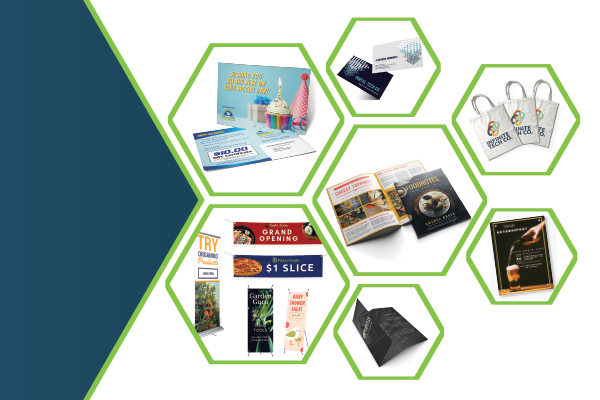
Print media’s effectiveness is not limited to one form or function. There are a plethora of printed marketing materials available to businesses, each with its unique advantages and applications.
- Brochures: These compact marketing tools can pack a wealth of information about your products or services in a concise, reader-friendly format. They’re excellent tools for trade shows, networking events, or direct mail campaigns, providing potential customers with valuable insights they can take with them.
- Flyers: One of the most cost-effective forms of printed advertising, flyers offer a way to broadcast information widely. They’re ideal for announcing new products, special events, or promotional offers and can be strategically distributed in areas with high foot traffic to maximize visibility.
- Business Cards: In the professional world, the tradition of exchanging business cards continues to hold sway. Beyond merely sharing contact information, a well-designed business card serves as a tangible reminder of a business encounter and can make a significant impression on potential clients or partners.
- Posters and Banners: These larger-format print materials command attention in public spaces. From promoting special events to new product launches, a creatively composed poster or banner can make a bold statement about your brand.
- Direct Mail: Personalization is the key to standing out in today’s crowded marketing landscape, and direct mail campaigns offer this in spades. By reaching potential customers directly in their homes with a targeted message, you can create a lasting impression and prompt them to take action.
The Pivotal Role of Design in Print Marketing
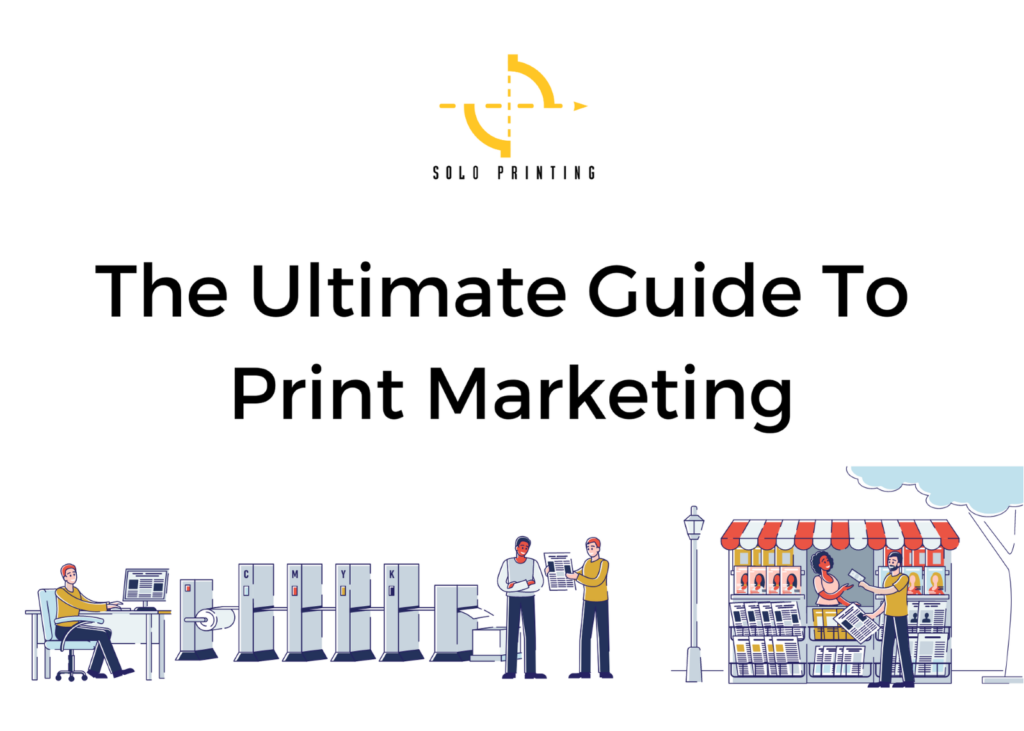
Beyond the type of material chosen, the design of printed marketing collateral plays a pivotal role in its overall effectiveness. It’s not just about making your print piece visually appealing; it’s about conveying your brand’s identity and message in a manner that captivates and compels your audience.
An effective design must reflect your brand’s personality and align with your target audience’s preferences. It must visually narrate your brand’s story while clearly and creatively conveying the intended message. This entails making strategic decisions about color schemes, typography, image selection, and layout. Striking the right balance between visual appeal and informational clarity can ensure your printed materials engage your audience and motivate them to respond.
Integrating Print with Digital: A Holistic Marketing Strategy
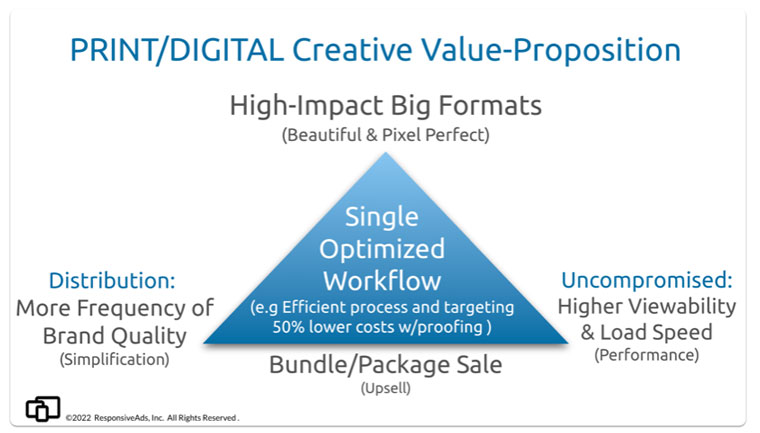
When it comes to marketing, it’s important to explore all possible avenues to reach your target audience. Combining print marketing with digital marketing is an effective way to create a comprehensive strategy that can help you expand your reach and impact.
By integrating your print and digital marketing efforts, you can present a consistent brand message across all platforms. This can help establish your brand identity and improve recognition among your target audience. For example, a direct mail campaign could include QR codes that direct recipients to a particular landing page on your website. This effectively bridges the gap between the physical and digital worlds, making it easier for potential customers to engage with your brand.
In addition, featuring your social media handles on your business card is another effective way to encourage new contacts to engage with your brand online. This is especially important given the growing importance of social media in today’s digital landscape.
Overall, combining print and digital marketing is a smart strategy that can help you maximize the impact of your marketing efforts. By taking advantage of both mediums, you can create a more comprehensive and effective marketing campaign that reaches your target audience no matter where they are.
The Long-Term Impact of Printed Marketing
Printed marketing materials have been a staple in the world of advertising for many years, and with good reason. They offer a tangible and lasting representation of your brand that can be seen, felt, and remembered long after the initial interaction. Unlike many forms of digital advertising that can be easily ignored or dismissed, printed materials have a way of capturing the attention of potential customers and holding it for an extended period.
One of the most significant advantages of printed marketing materials is their ability to help establish a strong brand identity. When designed correctly, they can communicate the essence of your brand in a way that is both visually appealing and memorable. The use of a consistent brand message, colors, and imagery across all printed materials can help to reinforce your brand identity and build brand recognition.
Moreover, printed marketing materials can also help to cultivate customer loyalty. A skillfully crafted print piece can remain in a home or office for an extended period, serving as a constant reminder of your brand. Each interaction with the printed material enhances the bond with your brand and reinforces your message. This is especially true in the case of direct mail campaigns, where the recipient has physically received something from your brand that they can hold in their hands.
In conclusion, the influence of printed marketing on brand reputation cannot be overstated. With the right design and messaging, printed materials can help to establish a strong brand identity, cultivate customer loyalty, and leave a lasting impression on potential customers. As such, businesses should consider including printed marketing materials as a critical component of their overall advertising strategy.
Conclusion
Despite the rise of digital marketing, print remains a valuable tool in the marketing arsenal. Its ability to offer a tactile, sensory experience can create deep emotional connections with your audience. Its credibility and staying power can reinforce your brand message and build trust over time.
Successful print marketing requires understanding your audience, crafting a compelling message, designing an engaging piece, and integrating your print efforts into a broader, multi-channel marketing strategy. As you explore the potential of printed marketing in this digital age, remember that a blend of traditional and digital tactics can help you reach more customers, make more meaningful connections, and ultimately drive more growth for your business.
The Benefits of Large Format Printing for Your Business
Investing in large format printing can help your business stand out from the competition. This type of printing is ideal for businesses that want to create larger-than-life marketing materials that draw attention and generate leads. Here’s a look at some of the benefits large format printing offers your business.
Cost Savings
In the long run, large format printing can save you money. With digital printing, companies can produce high-quality prints without having to invest in expensive plates or make a large initial investment for equipment. This makes it easier and more affordable for businesses to produce as much as they need when they need it, which can save them time and money.
Durability and Quality

With modern technology, large format prints are produced with exceptional accuracy and clarity. High-resolution graphics, vibrant colors, and sharp text are all possible with this type of printing process. Additionally, these prints are durable enough to withstand harsh conditions like rain and wind without fading or becoming damaged. This means that you can get more value out of your prints over time while still maintaining their quality.
Versatility
Large format prints are extremely versatile. This type of print can be used for banners, signs, posters, flags, trade show displays, vehicle wraps, wall coverings, window graphics – the list goes on! Businesses also have the option to choose between indoor or outdoor materials depending on their needs. Plus, these prints are easily customizable so that you can tailor them to fit your exact specifications.
Large format printing is an effective way to promote your business’s brand image and increase visibility in a variety of ways—from banners to trade show displays—all while saving money in the long run due its cost efficiency. With high-resolution graphics and sharp text printed on durable materials that won’t fade or become damaged easily over time, you’ll get maximum value out of your investment with large format printing services from Metric Marketing! Whether you’re looking for indoor or outdoor solutions that are tailored to fit your exact specifications—Metric Marketing has got you covered! Contact us today to learn more about how we can help you take advantage of the many benefits offered by large format printing services!
Screen Printing Basics: Learn the Basics of Screen Printing for Professional Results!
Screen printing is a great way to add creative designs to any type of surface. Whether it’s fabric, plastic, or other materials, screen printing can give you professional results that are sure to impress. If you’re new to screen printing and want to know the basics, then this blog post is for you. Read on to learn all the fundamentals of screen printing and how you can use this technology to create beautiful designs.
What is Screen Printing?
Screen printing is a printing technique used to transfer ink onto a material in a specific pattern or design. It uses a mesh screen with an emulsion coating which allows ink to be transferred through small openings in the mesh. The emulsion coating seals off the areas that don’t need ink while allowing only certain parts of the design to be printed through the mesh. This makes it incredibly versatile and allows for intricate designs and patterns to be printed with ease.
Materials You Can Use With Screen Printing
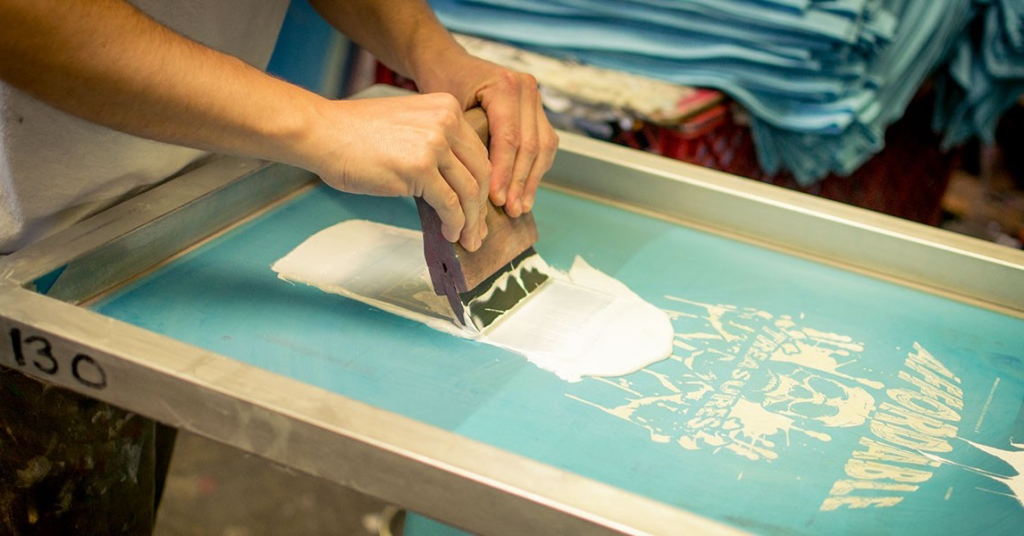
Screen printing isn’t just limited to paper or fabric; it can also be used on many other materials such as wood, metal, glass, and plastic. There are even special types of inks formulated specifically for each application so that your designs come out looking great no matter what material you’re using. For example, if you want your design printed onto wood or metal, there are special inks designed specifically for those surfaces that will ensure long-lasting results without fading or smudging over time.
/////// continued below ///////
The Benefits of Using Screen Printing Technology
The main benefit of using screen printing technology is that it allows you to produce high-quality prints with consistent colors and sharp lines no matter what material you’re using. With traditional methods like offset printing, colors often become muddy or distorted when printed onto different materials such as fabric or plastic; however, with screen printing technology this isn’t an issue since each color is applied separately so there won’t be any color mixing or distortion of colors after the print has been made. Additionally, because each color is applied separately it also makes it easier for you to create complex multi-color designs without having to worry about colors blurring together or becoming distorted when printed onto different materials.
Screen printing is a great way to add vibrant colors and intricate designs onto almost any kind of material imaginable. Whether it’s fabric, paper, glass, metal or plastic; with screen printing technology you can create professional quality prints with ease and consistently get amazing results every time! Plus it’s easy enough for anyone who has never tried screen printing before; all you need is some basic knowledge about how the process works and what materials work best for each type of project and you’ll be ready to go! So why not give screen printing a try today? You’ll be amazed at what amazing creations you can make!
Foil Blocking & Embossing: An Overview of the Process and Its Benefits
Foil blocking and embossing are two popular processes that can add a distinguished finish to any design project. These two techniques have been used for centuries to enhance designs, creating an elegant texture and adding depth to the page. By understanding how foil blocking and embossing work, you can create beautiful pieces of art that truly stand out from the crowd. Let’s explore this process in more detail.
What is Foil Blocking?
Foil blocking is a printing technique where heat, pressure, and metallic foil are used to transfer a design onto paper or cardstock. It’s often used on invitations, business cards, diplomas, book covers, labels, packaging materials — the list goes on! The foil comes in many different colors such as gold, silver, copper or even holographic foils! When it’s applied correctly it creates a stunning effect that’s sure to impress your clients.

What is Embossing?
Embossing is a finishing process which uses heat and pressure to raise an image or letter above its surface using metal plates or dies. This is typically done with paper or cardstock but can also be done with other materials such as leather or metal. The results can be subtle yet beautiful when done properly. Embossing adds dimension to your designs without taking away from their elegance — the perfect combination!
Benefits of Foil Blocking & Embossing
The biggest advantage of using these techniques for your projects is that they create a unique look that stands out among other printed materials. They also help you build brand recognition since customers will associate your company with these distinctive designs. Additionally, both techniques are relatively affordable compared to other kinds of printing processes so they offer great value for money! Finally, they also provide durability since they won’t fade over time like inkjet prints do. This makes them ideal for long-term projects where quality and longevity are key considerations.
When it comes to adding impactful touches to your designs, few methods compare with foil blocking & embossing. These two processes have been around for centuries but remain just as popular today due to their ability to produce stunning results every time. Whether you’re looking for an eye-catching invitation or want something special for product packaging, you really can’t go wrong by turning to these classic printing methods! So if you want something truly unique that will last the test of time – give foil blocking & embossing a try today!



